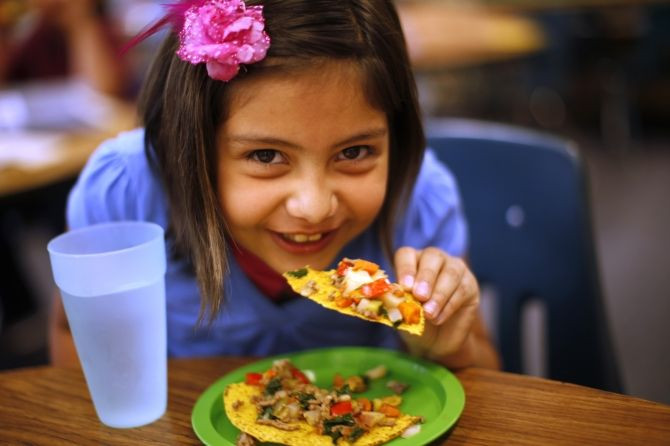Why Cutting Food Into Multiple Pieces Before Your First Bite Gets You Fuller Faster

People eat less when they are offered several small pieces of food rather than one large piece, even when both portions contain the same number of calories, according to new research.
While scientists aren't sure why dicing up a muffin and eating smaller portions is more filling than eating the whole thing at once, they believe an optical illusion with the brain may be responsible in tricking the stomach into thinking that a bar of chocolate broken into small pieces is bigger than one that remains whole.
The study, presented at the Annual Meeting of the Society for the Study of Ingestive Behavior in Zurich, Switzerland, consisted of 301 college students who researchers watched eating bagels.
Participants were either given a bagel that had been cut in four parts or one that was whole.
Twenty minutes after participants ate the bagel they were given another meal and told that they could eat as much or as little as they wanted.
All leftover foods including the bagel and complimentary test meal had been recorded.
Researchers found that those who had been given a bagel that was cut into pieces ate less of it and also less of the later meal, and those who received the single, uncut bagel ate more of the bagel and test meal, suggesting that food cut into multiple pieces may be more satiating than a single uncut portion of food.
While one explanation may be that food cut into multiple, bite-sized pieces may perceptually look like more and therefore provoke greater feelings of fullness, researchers believe another explanation could be that cut-up food is eaten more slowly, which allows the body more time to realize that it is full before the person has overeaten.
Previous research on rats backed up the latest findings.
Researchers let rats loose in a T-maze where one direction led rats to 30 small food pellets and the other direction led rats to a single large pellet that had equal number of calories.
Scientists found that rats were more likely to choose the route with 30 small food pellets and ran more quickly towards that direction.
"Cutting up energy-dense meal foods into smaller pieces may be beneficial to dieters who wish to make their meal more satiating while also maintaining portion control," said lead researcher Devina Wahera of the Arizona State University at the conference.
This study should be considered preliminary until published in a peer-reviewed journal.



























